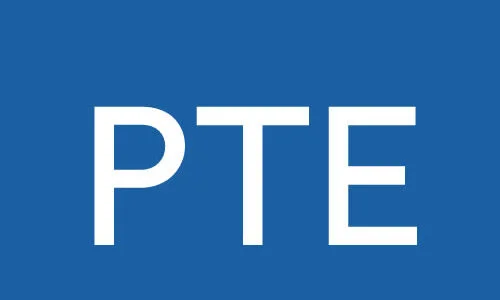Is PTE a truly valuable tool for your academic or professional pursuits? With the growing popularity of this exam, you might wonder about its actual usefulness. As you weigh the advantages and disadvantages, consider how PTE stands against other well-known assessments and the practical implications it holds. The discussion ahead will shed light on the various facets of PTE, helping you make an informed decision.
Pros of PTE
- When considering the advantages of PTE, it’s evident that the test’s automated scoring system provides consistent and reliable evaluation of language proficiency. This feature ensures fairness and accuracy in grading, eliminating potential biases that can arise in human-based assessments. The objectivity of the automated scoring system improves skills by giving test-takers a clear understanding of their language abilities without subjective interpretations.
- Moreover, PTE offers global recognition, making it a valuable certification for individuals seeking opportunities in education or employment abroad. Institutions and organizations around the world acknowledge the validity and reliability of PTE scores, enhancing the test taker’s credibility on an international scale. This recognition opens doors to a multitude of opportunities, from studying at prestigious universities to securing employment in multinational corporations.

Cons of PTE
- Despite its advantages, PTE has certain drawbacks that merit consideration in a comprehensive assessment of its utility. One significant con is related to time management. The PTE exam is timed, and test takers need to efficiently allocate their time across different tasks like speaking, writing, reading, and listening. Poor time management can lead to incomplete sections or rushed responses, impacting overall performance.
- Test anxiety is another common issue associated with PTE. The pressure of performing well within a set time frame, combined with the high stakes of the exam for academic or immigration purposes, can contribute to heightened stress levels. This anxiety may affect concentration, leading to errors in responses or difficulty in conveying ideas effectively. Strategies such as time tracking during practice sessions and mindfulness techniques can help mitigate these challenges. Understanding and addressing these cons can better prepare individuals for the PTE exam, enhancing their overall test-taking experience and results.
PTE Vs. Other Exams
- Comparing the Pearson Test of English (PTE) with other standardized exams reveals distinct differences in format, scoring criteria, and test-taking strategies.
- When PTE vs. IELTS is considered, one significant variance lies in the speaking section. PTE’s speaking component involves speaking into a microphone, while IELTS uses a face-to-face interview format. This dissimilarity can impact test-takers differently based on their comfort with technology and face-to-face interactions.
- In terms of PTE vs. TOEFL, the writing section stands out. PTE requires test-takers to write essays in response to prompts, whereas TOEFL includes integrated tasks that combine listening, reading, and writing skills.
- Understanding these differences is crucial for selecting the exam that aligns with your strengths and preferences. Whether you opt for PTE, IELTS, or TOEFL, knowing the distinctive features of each exam can help you prepare more effectively and perform to the best of your abilities on test day.
Tips for PTE Preparation
- To excel in the Pearson Test of English (PTE), it’s essential to develop a focused study plan tailored to the exam’s unique format and requirements. Effective strategies play a crucial role in achieving success in the PTE. Begin by familiarizing yourself with the test format and structure. Practice regularly with official PTE study materials, such as sample questions and practice tests, to get accustomed to the types of questions and the timing of the exam.
- Additionally, focus on improving your English language skills, particularly in listening, reading, writing, and speaking. Allocate time to work on each of these areas, seeking feedback to identify and address your weaknesses. Utilize online resources and PTE preparation courses to deepen your understanding of the test content and to access expert guidance.
- Furthermore, simulate exam conditions during your practice sessions to build stamina and enhance time management skills. By implementing these effective strategies and utilizing quality study materials, you can boost your confidence and readiness for the PTE, increasing your chances of achieving a desirable score.
Real-Life Impact of PTE
- Moving from mastering PTE preparation tips to understanding the real-life impact of PTE, one can see how performance in this test can significantly influence academic and professional opportunities. Achieving a high score in the PTE exam can open doors to job opportunities and enhance visa applications, as many institutions and countries recognize PTE scores as a valid measure of English proficiency. In terms of academic success, a good PTE score can be a deciding factor in gaining admission to universities and securing scholarships, especially in English-speaking countries.
- Moreover, excelling in the PTE exam can also improve communication skills, as the test assesses one’s ability to effectively communicate in English through various tasks such as speaking, writing, and listening. This proficiency isn’t only valuable in academic and professional settings but also in everyday interactions where clear and concise communication is essential.
Conclusion
In conclusion, the PTE exam has its advantages and disadvantages. While it offers a fair assessment of English proficiency and is widely accepted by universities and governments, some may find its format challenging. Compared to other exams like IELTS and TOEFL, PTE has its unique features that suit different preferences. With proper preparation and practice, individuals can excel in the PTE exam and achieve their academic and professional goals.